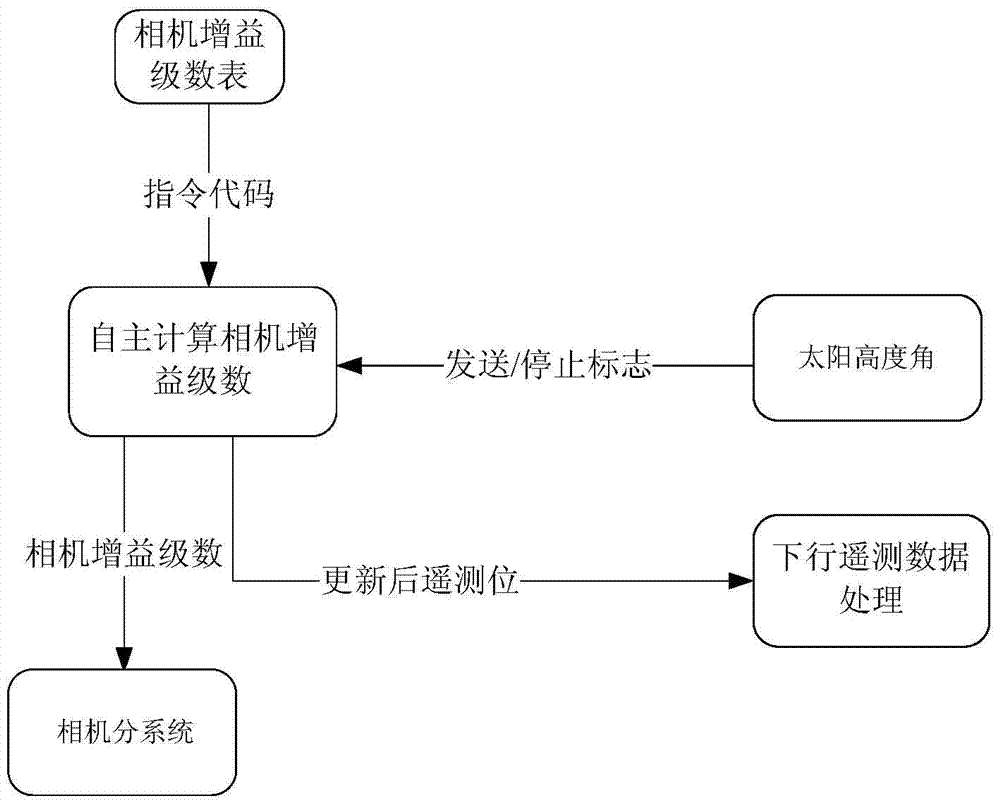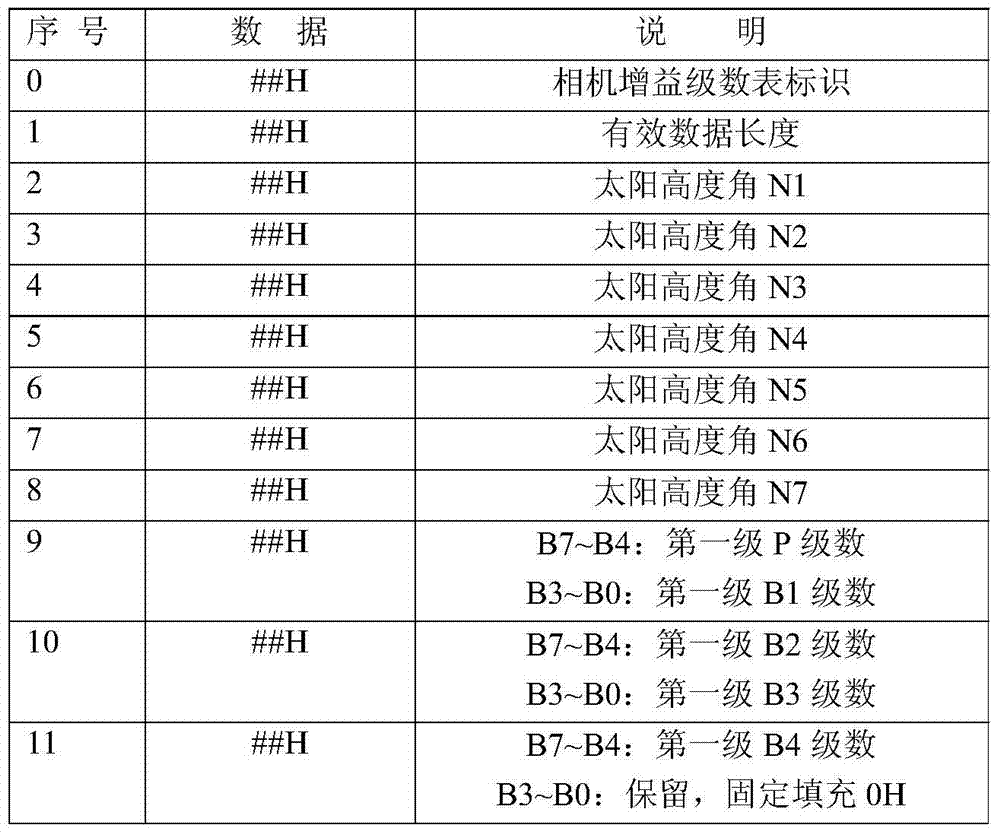A method for autonomously acquiring and sending camera gain series on a star
A camera gain and autonomous transmission technology, applied in the field of aerospace, can solve the problems of unreasonable dynamic range of satellite images, inflexible setting of on-orbit imaging parameters, and underutilization of image dynamic range, etc. The effect of upscaling tasks, increasing flexibility and automation
- Summary
- Abstract
- Description
- Claims
- Application Information
AI Technical Summary
Problems solved by technology
Method used
Image
Examples
Embodiment Construction
[0023] The present invention proposes that the computer of the Star Service Center independently acquires and sends the design method of the camera gain series mainly including the following aspects:
[0024] Firstly, the camera gain series table should be established, and according to different sun altitude angles, the camera gain series corresponding to the best working state of the camera under the sun altitude angle. The above-mentioned camera gain series table is as follows image 3 shown.
[0025] The ground will upload the completed camera gain series table to the computer of the Star Service Center through remote control. When the computer of the star service center receives the camera gain series table, it stores the content of the camera gain series table in three positions in the on-board format. When the ground needs the Starwork Center computer to telemeter the camera gain series content stored on the star to the ground, the Starwork Center computer first perfor...
PUM
 Login to View More
Login to View More Abstract
Description
Claims
Application Information
 Login to View More
Login to View More - R&D Engineer
- R&D Manager
- IP Professional
- Industry Leading Data Capabilities
- Powerful AI technology
- Patent DNA Extraction
Browse by: Latest US Patents, China's latest patents, Technical Efficacy Thesaurus, Application Domain, Technology Topic, Popular Technical Reports.
© 2024 PatSnap. All rights reserved.Legal|Privacy policy|Modern Slavery Act Transparency Statement|Sitemap|About US| Contact US: help@patsnap.com










